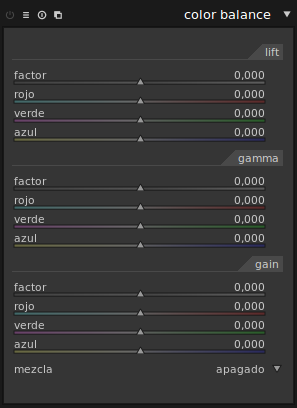

The module lut3d lets you select the appropriated one. Color spaceĮach 3D LUT is built to be applied on a given color space. Otherwise the parameters only hold the file name and path (relative to 3D lut root folder).Īs a consequence the module cannot recalculate the image without original LUT file. If compressed, the LUT itself is saved (compressed) with the parameters of the image, and in the xmp file if activated as well. The important point to remember is the difference between compressed and not compressed files. The different types of source file are described above. This is done selecting the correct 3D lut root folder in Configuration/Core options/Miscellaneous. Then you need to backup properly the LUT files (+ folders) you have used.ĬAUTION: dt understands Compressed LUT files only if G’MIC library is installed on your machine.īefore using the module you must define the folder where you have stored the LUTs you like. Instead the file path (inside the root folder) is saved. Note: except for compressed LUT, due to the size of the LUT file, LUT data are not saved with the parameters of the image. See below some useful scripts to manage your compressed LUT library. This small size allows dt to save the image transformation in its database and/or in the image xmp file.Ī gmz file can hold multiple compressed luts.ĭecompression time is mitigated using cache files (which can be shared with G’MIC). The compressed luts are actually 100 times smaller than haldclut files. Smaller than cube files, they are also more accurate (see LUT dimension below).Ĭompressed LUT files have been created by the G’MIC team (see - CLUT compression) which offers a ready to use library (gmic_cluts.gmz). Haldclut files are used in Rawtherapee and PhotoFlow. free-film-luts-for-editors-dits-and-colorists.You can find such files through these links:

They are text files with the cube extension. Cube filesĬube files are used by video editors and colorists. The module accepts cube files, haldclut files and compressed LUT files. But they can be used for any other technical transforms like LOG to REC.709, which are used in video edition for example. The most common applications of LUTs are film simulation and color grading. 3D LUTĪ 3D LUT is a tridimensional table which allows to transform any RGB value into another RGB value. Latin hypercube sampling (LHS) is a form of stratified sampling that can be applied to multiple variables.The lut3d module will be introduced in darktable 3.0 and is designed to apply a 3D LUT (LookUp Table) to an image. The method commonly used to reduce the number or runs necessary for a Monte Carlo simulation to achieve a reasonably accurate random distribution. LHS can be incorporated into an existing Monte Carlo model fairly easily, and work with variables following any analytical probability distribution. Monte-Carlo simulations provide statistical answers to problems by performing many calculations with randomized variables, and analyzing the trends in the output data. There are many resources available describing Monte-Carlo ( history, examples, software).

The concept behind LHS is not overly complex. Variables are sampled using a even sampling method, and then randomly combined sets of those variables are used for one calculation of the target function. The sampling algorithm ensures that the distribution function is sampled evenly, but still with the same probability trend. Figure 1 and figure 2 demonstrate the difference between a pure random sampling and a stratified sampling of a log-normal distribution. (These figures were generated using different versions of the same software.
#Darktable lut plugin software#
LATIN HYPERCUBE EXCEL SOFTWAREĭifferences within the plot, such as the left axis label and the black lines, are due to ongoing development of the software application and are not related to the issue being demonstrated.)įigure 1. 500 samples were taken using the stratified sampling method described here, which generated a very smooth curve.įigure 2. A cumulative frequency plot of “recovery factor”, which was log-normally distributed with a mean of 60% and a standard deviation of 5%. To perform the stratified sampling, the cumulative probability (100%) is divided into segments, one for each iteration of the Monte Carlo simulation.


 0 kommentar(er)
0 kommentar(er)
